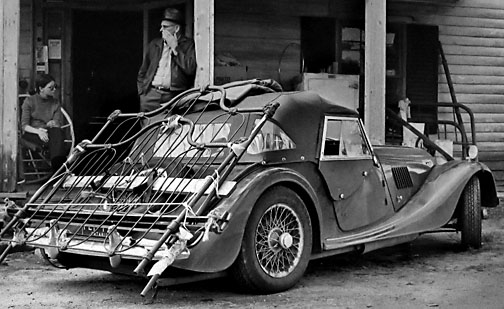 |
| A risky but bold work of art by Fiona, age 4. One cannot escape risk. |
Wednesday my wife and I met with a doctor, an expert in stroke treatment. He is associated with both University Hospital and with the Robarts Research Institute. He laid out the detailed findings from the investigation into the health of my arteries down on the desk. He looked at us for a moment and then told me, "You are trapped between a rock and a hard place."
The tests revealed the arteries in my neck are laden with plaque. My arteries hold three times the amount of plaque as that found in healthy men of my age. This plaque can flake and the small bits can be carried in the blood to the brain. This explains the TIAs, transient ischemic attacks, I have been having. TIAs, also known as "mini-strokes", are taken very seriously by doctors as they can be harbingers of a massive stroke in one's future.
I already take some pretty powerful medications. If all had gone well with these recent tests, I might have had some of my meds cutback. Strong meds often carry risks. Instead, I was given another cholesterol fighting drug which will also boost the benefits gained from the statin I am already taking. These drugs can mess with some important chemicals in the body. To counter this I must add 200mg of another drug taken twice a day. Unfortunately, this drug can increase the bleeding potential resulting from taking the anticoagulant Pradaxa. I take Pradaxa.
My history of heart arrhythmia demands I take an anticoagulant. Arrhythmias increase the risk of blood clots forming in the heart. These can then travel to the brain. An anticoagulant cuts this risk. Unfortunately, because micro bleeding was discovered in my brain, I cannot take the common and inexpensive anticoagulant Coumadin. It would increase my risk of having an uncontrolled cranial bleed.
There is an alternative, the anticoagulant Pradaxa. It will lessen my chance of stroke without increasing my risk of bleeding in the brain. The downside is that Pradaxa is expensive, very expensive, and if I should have a serious bleeding problem, for any reason, the blood thinning achieved by Pradaxa cannot be as quickly reversed as it can with Coumadin.
Yes, I am trapped between a rock and a hard place. But, I am not alone. I am trapped there with my doctors. They have no perfect answers to my health problems. Try this and that may go wrong. Try that and this may go wrong. And either answer is accompanied by the risk of some truly awful side effects, of unwanted consequences.
Our blood clots for good reason. There is no mystery as to why anticoagulants carry risks. All my drugs mess with important functions in my body and messing with those functions is risky. Period. Being a doctor is all about balancing risk. Doctors do a damn amazing job at balancing those risks. I am in awe of the talents, the skills, the knowledge and the bold risk-taking of my doctors.
It was more than a decade ago that I had the mitral valve in my heart repaired robotically. I was the first person in Canada to have such an operation. It was risky but it was clearly worth the risk. My ICD/pacemaker was a risk, some doctors questioned whether I actually needed one. Today my heart is being paced 93 percent of the time. I have had my heart rebooted by my built-in defibrillator at least three times. My doctors and I have taken a lot of risks over the years and so far they have made the right calls.
As of today, I am taking a mixture of ten tables and capsules a day. I chew 'em; I wash 'em down with water; I take 'em with food; I take 'em on an empty stomach. I never did a lot of drugs as a young man growing up in the '60s, but as a senior my world is veering toward Jefferson Airplane country and the land of the white rabbit.
One pill makes you larger,
And one pill makes you small,
And the ones that mother gives you,
Don’t do anything at all (maybe but doubtful).
If I should have a stroke, I know my doctors will wonder what could they have done differently. If I am lucid after the event, I will tell them there is nothing they could have done differently. Nothing. They balanced the risks and we lost.
C'est la vie.





